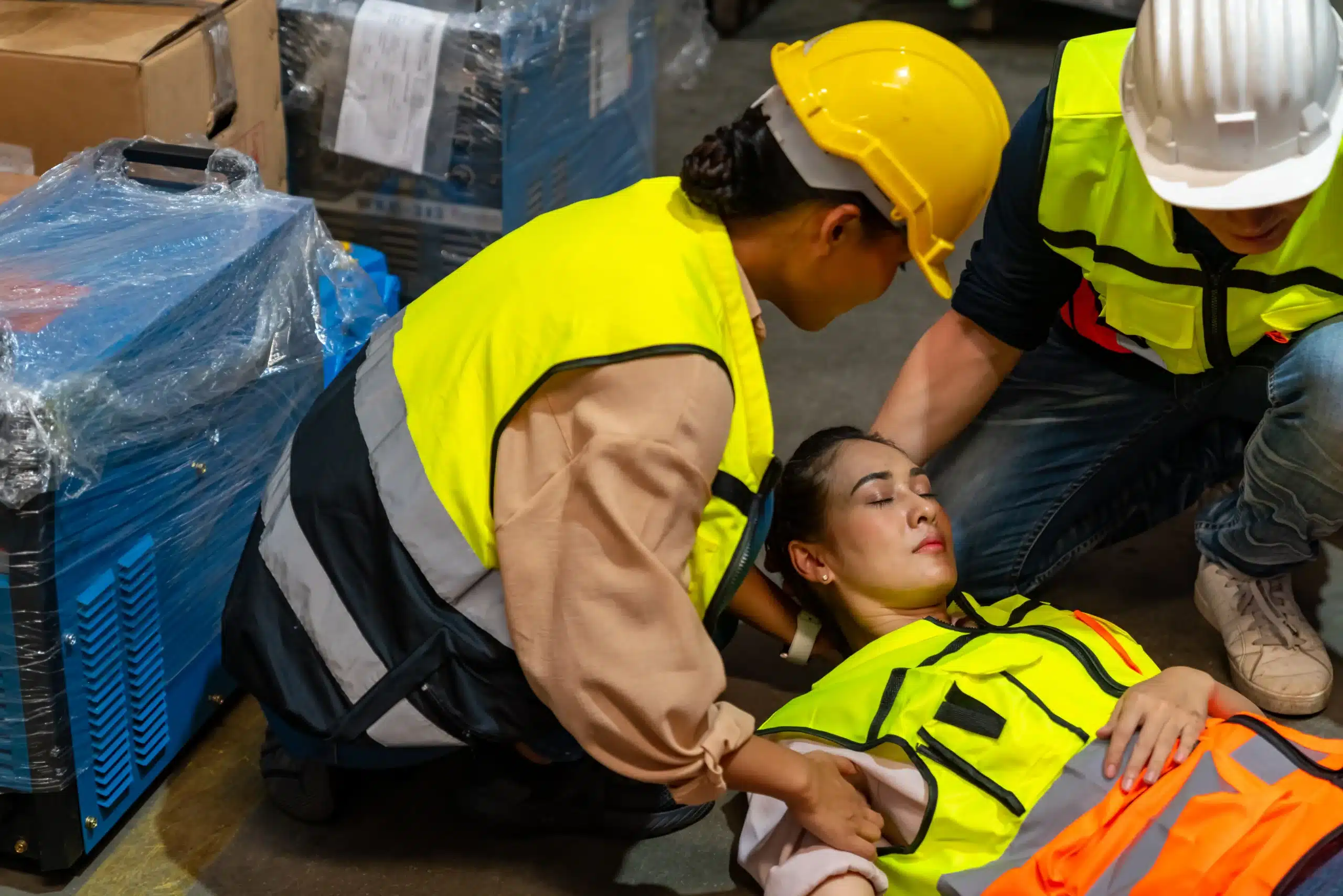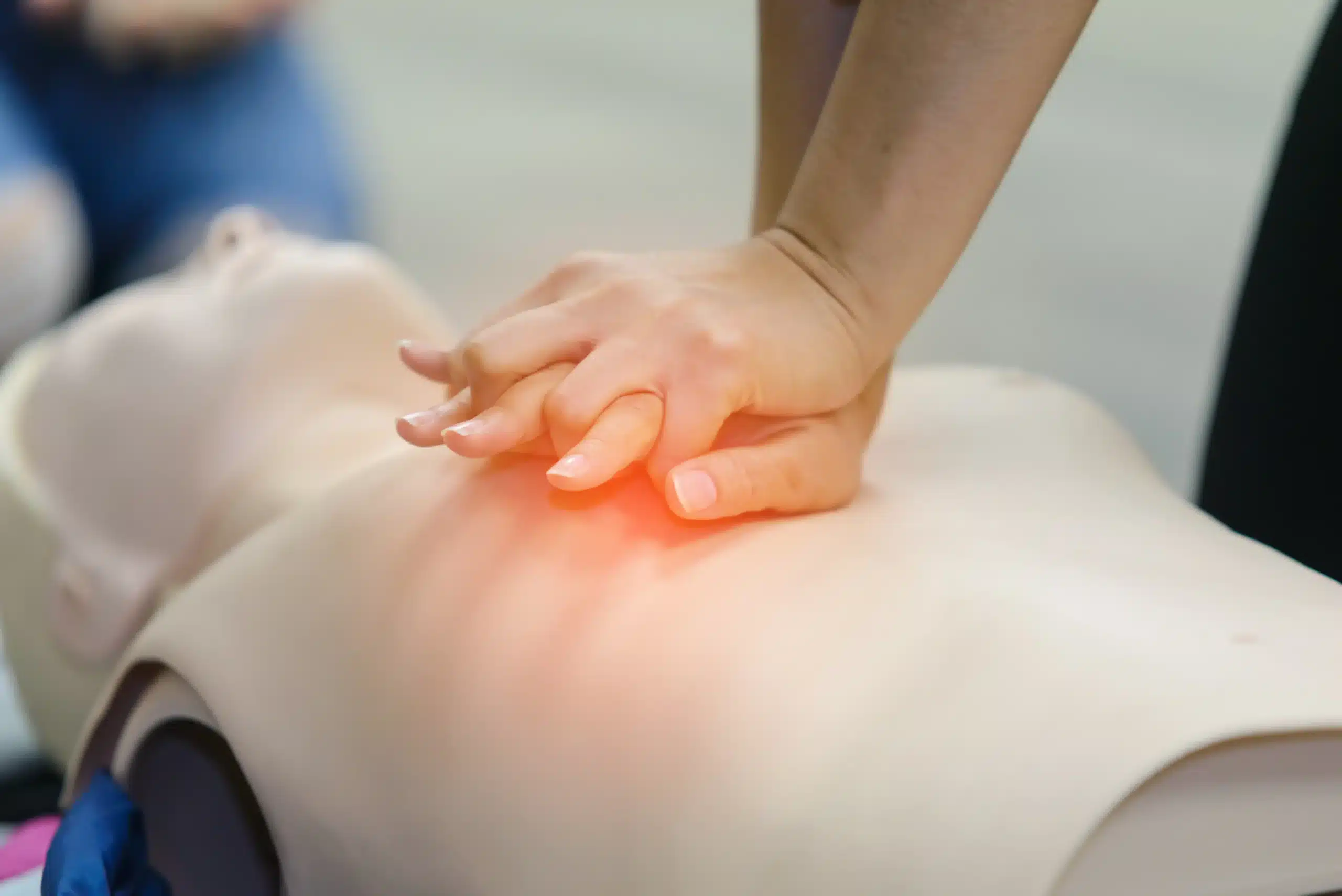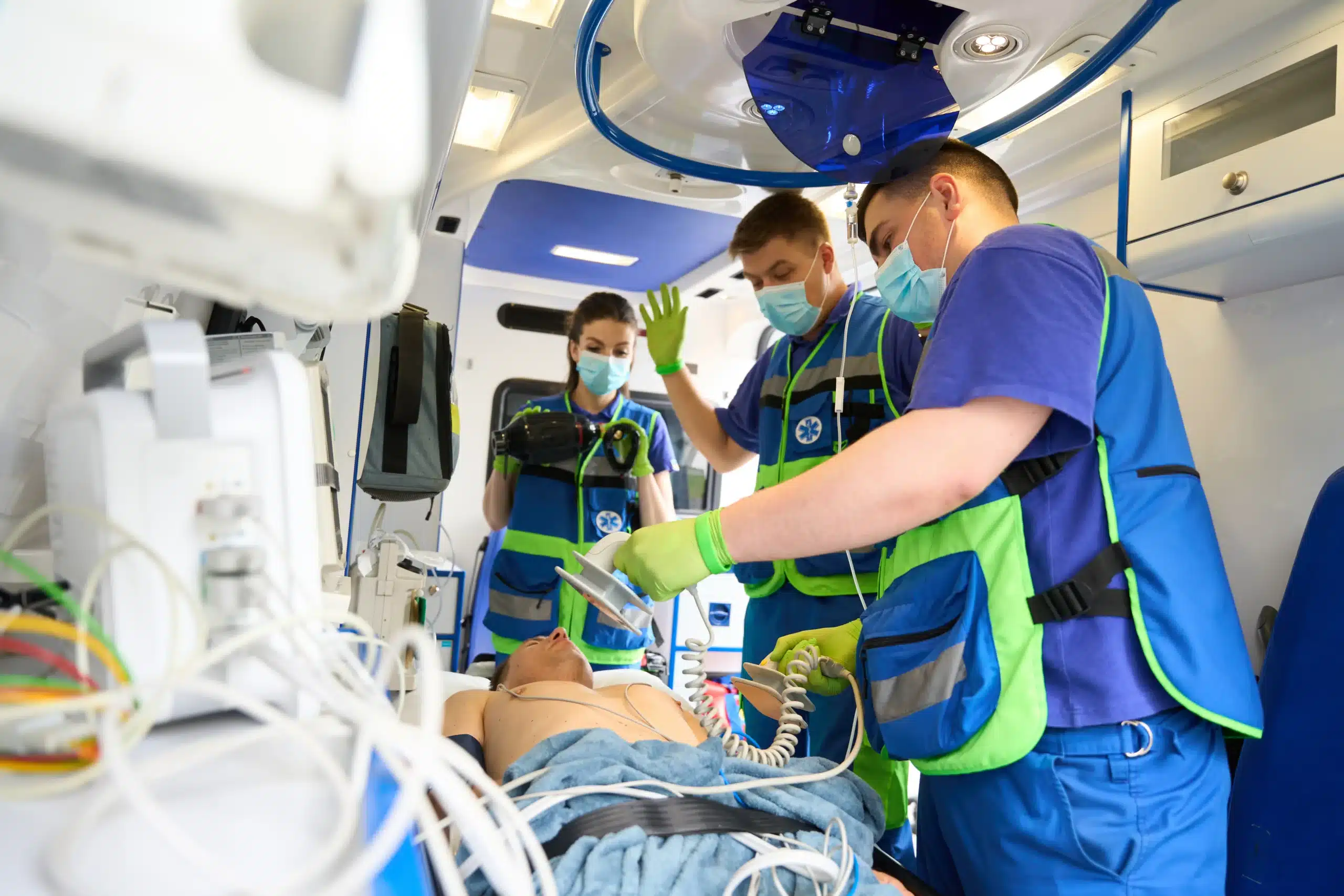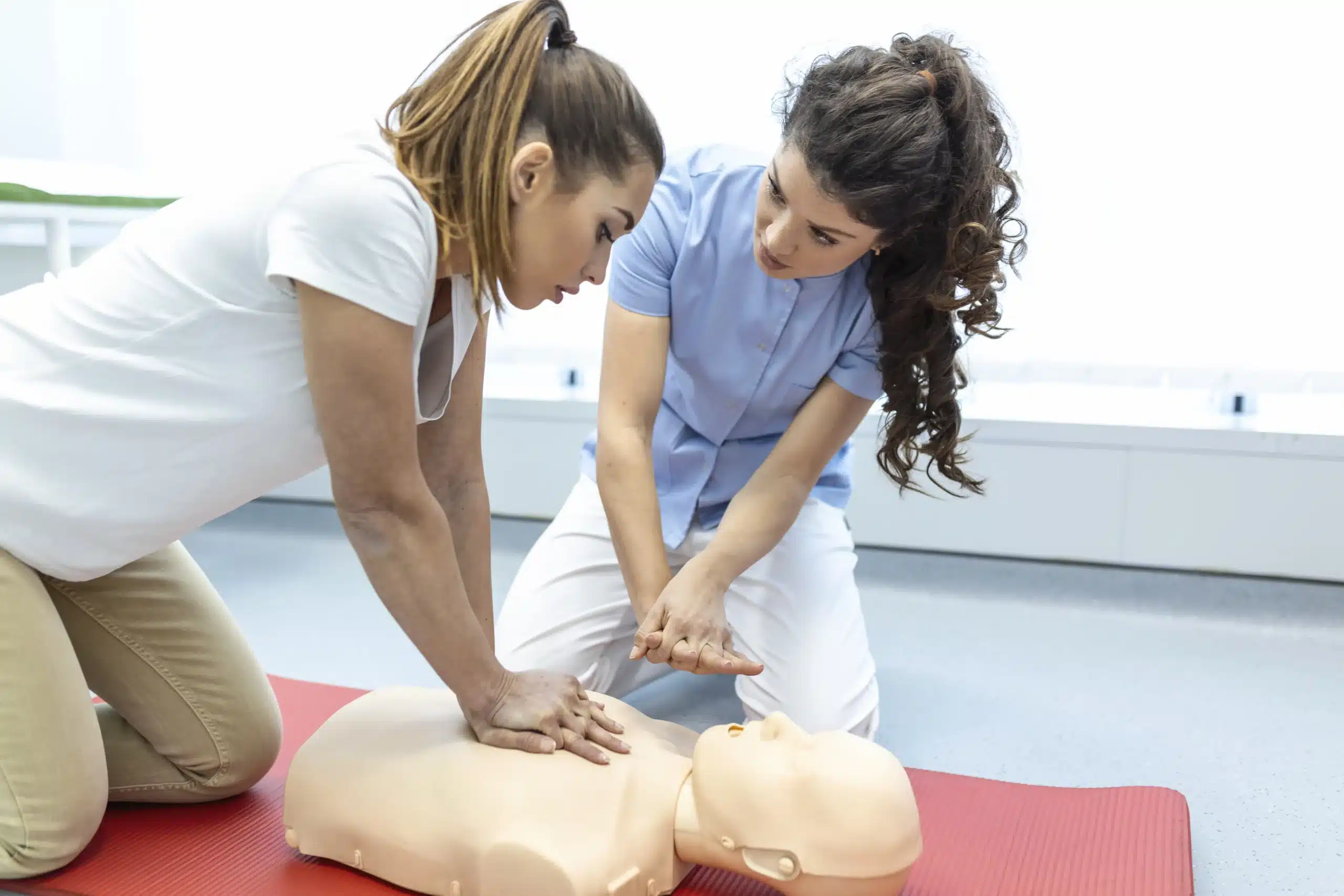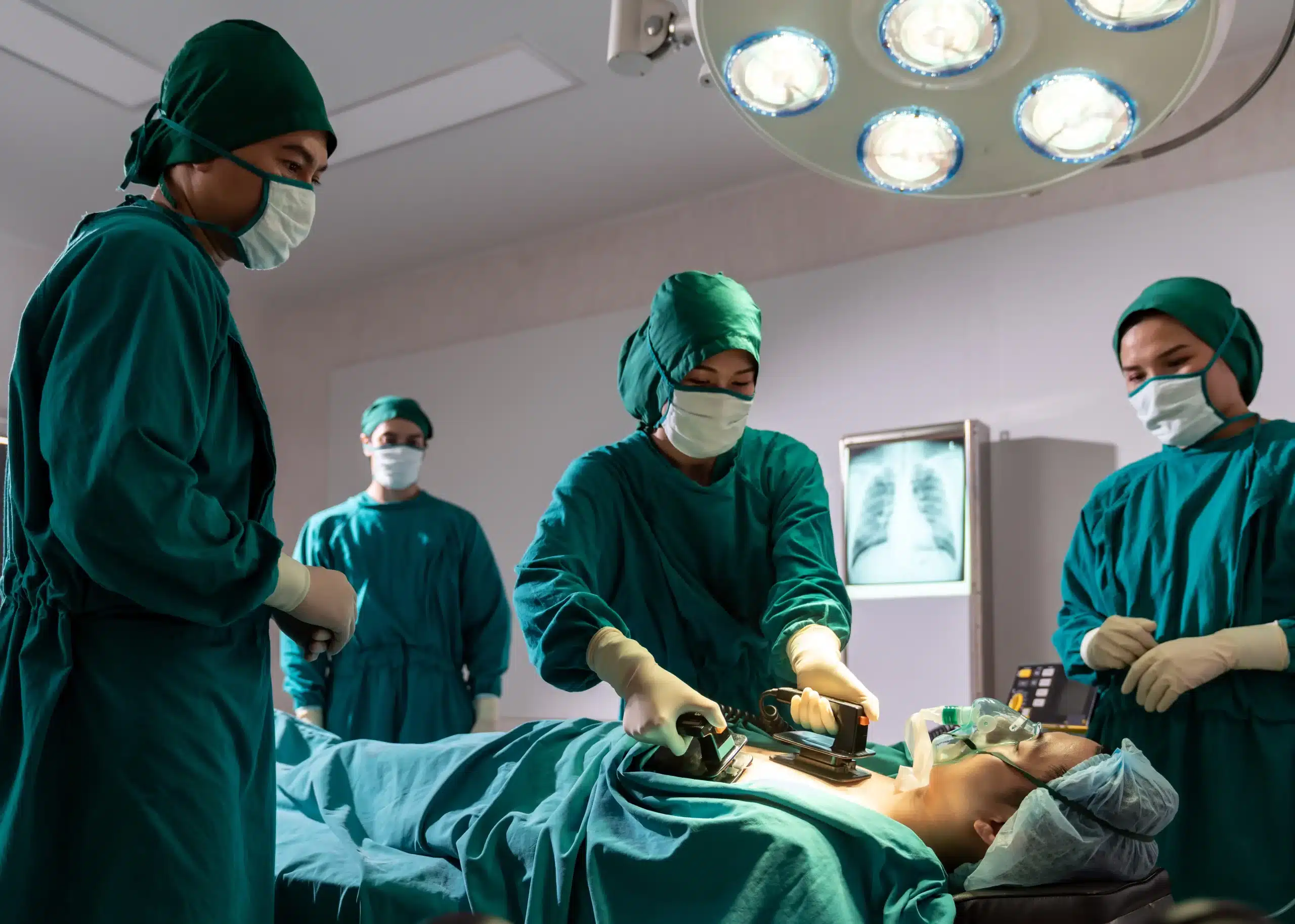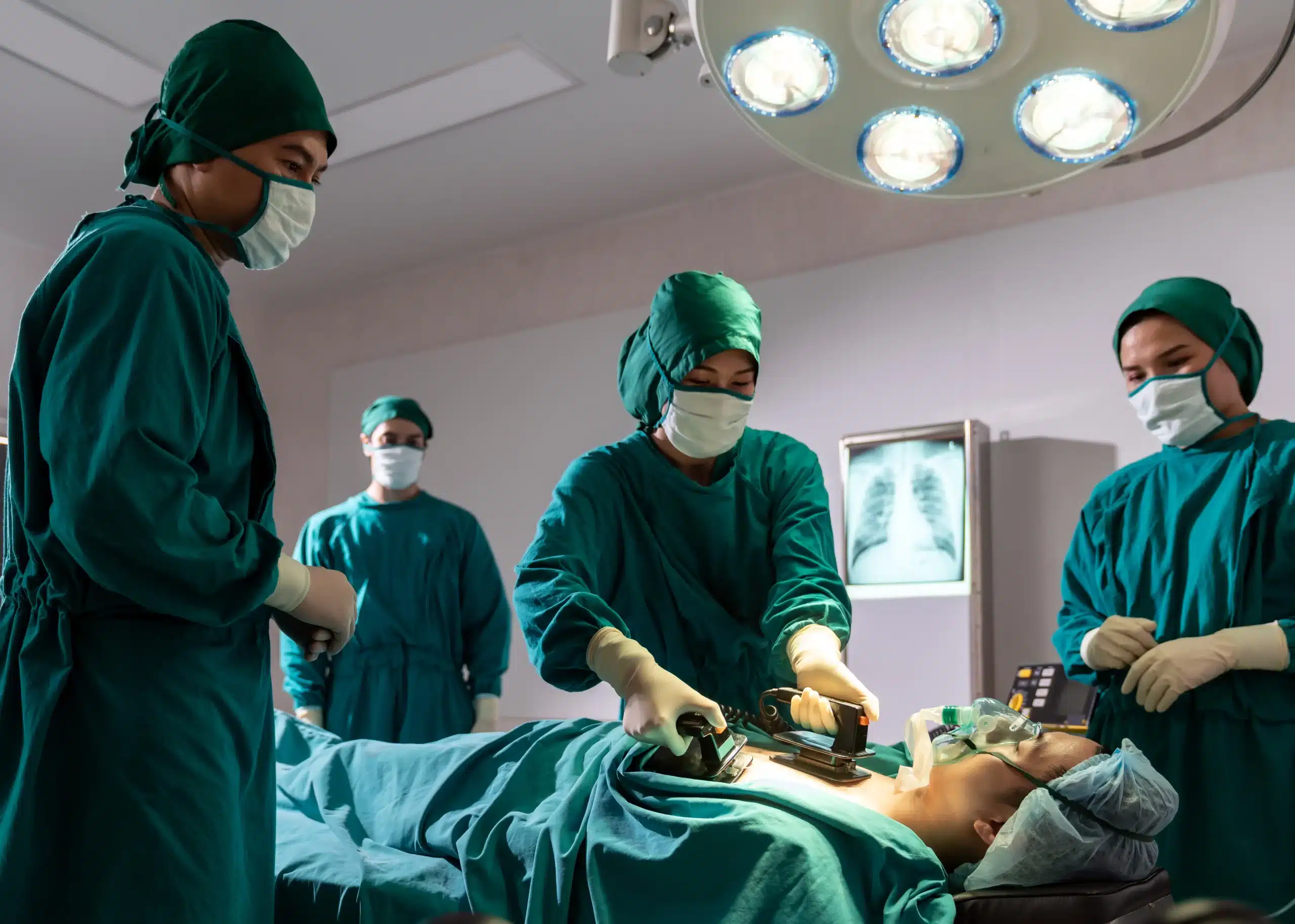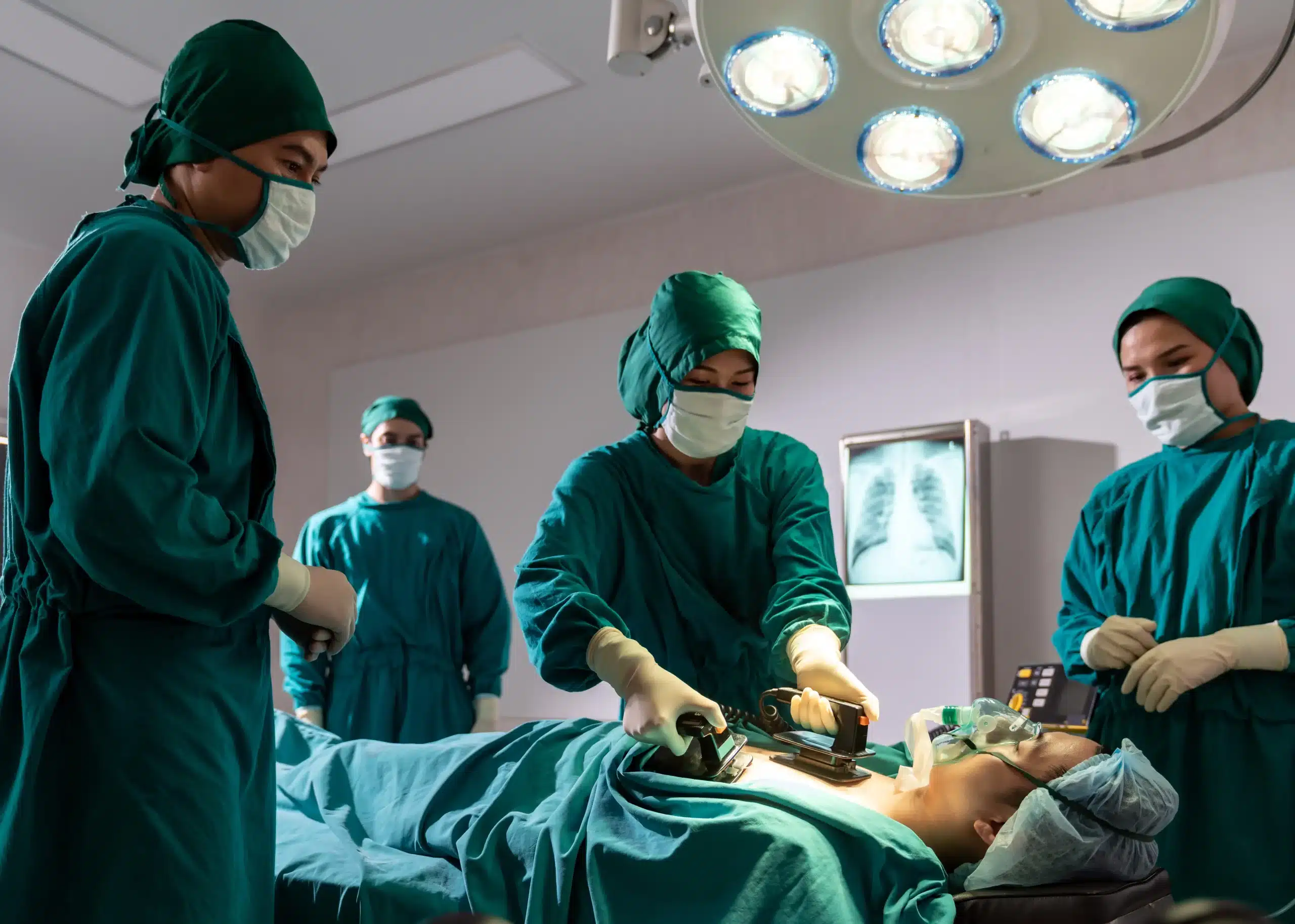Emergencies can happen anytime, anywhere. Being equipped with the skills to respond effectively can make all the difference. AHA BLS courses in San Rafael provide comprehensive training in basic life support, giving you the confidence to act in critical situations. This guide covers everything you need to know about BLS certification, from the core skills taught to finding the right course provider in San Rafael. We’ll explore the advantages of AHA certification, the various course formats available, and what to expect during your training. Let’s help you find the perfect BLS course in San Rafael and empower you to save lives.
Key Takeaways
- BLS Certification Goes Beyond Basic CPR: It includes essential skills like AED use, relieving choking, and effective team resuscitation, all based on the latest American Heart Association guidelines.
- Flexible Learning Options Make Training Accessible: Choose from in-person classes, blended learning (online coursework plus in-person skills sessions), or the streamlined RQI program for healthcare professionals.
- The Right Provider Enhances Your Learning: Look for qualified instructors, smaller class sizes for personalized attention, well-equipped facilities, and providers offering competitive pricing and convenient schedules.
What are AHA BLS Courses & Why are they Important?
Basic Life Support (BLS) courses, certified by the American Heart Association (AHA), equip participants with the skills to respond to life-threatening emergencies. These courses are crucial for healthcare providers and anyone in a position to provide immediate care. BLS goes beyond basic CPR, encompassing a broader range of lifesaving techniques. It emphasizes early recognition and response to emergencies, high-quality CPR, and teamwork during resuscitation efforts. Choosing an AHA-certified course ensures you’re learning the most up-to-date, evidence-based practices. For those in the San Rafael, Corte Madera, and Fairfax areas, several providers offer these essential courses. San Rafael CPR classes offers a low price guarantee.
Key BLS Skills
A BLS certification course covers a range of essential skills. You’ll learn how to perform high-quality CPR for adults, children, and infants, a skill that can significantly impact survival rates during cardiac arrest. The course also teaches the proper use of an automated external defibrillator (AED), a device that can restore a normal heart rhythm. Beyond these core skills, BLS training emphasizes effective team dynamics during resuscitation, ensuring coordinated and efficient responses in emergencies. Additionally, you’ll learn how to relieve foreign-body airway obstruction, a critical skill for addressing choking incidents. These combined skills make BLS certification a valuable asset for any healthcare professional. You can find more details on the HeartCode® BLS website. For childcare providers, the EMSA Child Care Health & Safety course provides additional, specialized training.
Why Healthcare Professionals Need BLS Certification
For healthcare professionals, BLS certification is often a job requirement. It signifies a commitment to providing high-quality patient care and maintaining the skills needed to handle critical situations. Learning CPR can truly save lives, and with nearly 350,000 out-of-hospital cardiac arrests occurring annually in the US, the need for trained professionals is clear. The AHA certifications are widely recognized and respected, holding weight across various healthcare settings. BLS certification demonstrates a commitment to best practices and provides a foundation for advanced life support training. It empowers healthcare providers to confidently respond to emergencies, potentially making a life-saving difference. For a comprehensive guide to BLS classes in San Rafael, check out this helpful resource. Medical professionals looking for a quick and efficient way to get certified should consider the RQI program.
Top San Rafael AHA BLS Course Providers
Finding the right BLS course provider is key to a positive learning experience. Here’s a rundown of some providers offering AHA BLS certification in San Rafael:
San Rafael CPR Classes
San Rafael CPR Classes offers the convenient and efficient RQI program for Heartsaver BLS certification through the American Heart Association. This program is ideal for busy medical professionals seeking a flexible and streamlined certification process. They also offer a low price guarantee and teach standard BLS courses alongside other safety training options like EMSA Child Care Health & Safety. You can find more information on their website about BLS classes in San Rafael. San Rafael CPR Classes serves San Rafael, Corte Madera, and Fairfax, CA. They also maintain a directory of CPR providers in Northern California.
Safety Training Seminars
Safety Training Seminars is another option for AHA-certified courses, including BLS, ACLS, PALS, and First Aid. They emphasize high-quality instruction and offer courses seven days a week, aiming to accommodate various schedules.
Bay Area CPR
Bay Area CPR provides BLS, ACLS, and PALS certification courses in San Rafael and the surrounding Bay Area. They focus on providing convenient locations and schedules.
ProCPR
ProCPR also offers CPR and first-aid training in the wider Bay Area. It’s always a good idea to check their website or contact them directly to confirm their current course offerings and schedules in San Rafael.
American Red Cross
While the American Red Cross isn’t specifically mentioned in the provided research, they are a well-known provider of CPR and first-aid training. It’s worth exploring their website or contacting them to see if they offer BLS certification courses in the San Rafael area. They may be a suitable alternative for those seeking a different certifying body.
Course Formats & Schedules
Finding a BLS course that fits your schedule shouldn’t be a struggle. Luckily, several formats are available, so you can choose what works best for you. Let’s break down the options:
In-Person Training
In San Rafael, several providers like Safety Training Seminars offer high-quality, in-person American Heart Association BLS courses. This traditional format provides hands-on learning and direct interaction with instructors. Many providers offer classes every day of the week, making it easier to find a time that accommodates your busy schedule. If you thrive in a classroom setting and appreciate face-to-face instruction, in-person training might be the best option for you.
Blended Learning & HeartCode® BLS
If you prefer a more flexible approach, blended learning could be a great fit. The American Heart Association’s HeartCode® BLS program combines online coursework with a hands-on skills session. This allows you to complete the cognitive portion at your own pace, from anywhere with internet access. After finishing the online modules, you’ll schedule a shorter in-person session to practice your skills and take the skills test. This format is perfect for those who prefer self-directed learning or have limited time for traditional classes.
RQI Certification
For healthcare professionals seeking a streamlined certification process, the RQI program is worth exploring. RQI classes offer a blended learning approach similar to HeartCode® BLS, but with a focus on efficient renewal and skills maintenance. This program combines online learning with low-dose, high-frequency skills practice and testing, allowing medical professionals to stay current on their certifications quickly and conveniently. San Rafael CPR Classes is one provider offering this specialized program. If you’re a healthcare provider looking for a flexible and efficient way to maintain your BLS certification, check out the benefits of RQI.
What to Expect in an AHA BLS Course
So, you’ve signed up for an AHA BLS course—fantastic! Here’s what you can expect during your training. Understanding the course structure, the emphasis on hands-on learning, and the certification process will help you feel prepared and confident.
Course Structure & Duration
BLS certification courses in San Rafael, like those offered by San Rafael CPR Classes, adhere to American Heart Association guidelines. These courses are designed for healthcare providers, covering more advanced life-saving skills than general CPR training. Expect a dynamic learning environment combining lectures, demonstrations, and hands-on practice. While the exact duration can vary slightly, most BLS courses run for several hours. This allows ample time to cover essential topics like high-quality CPR for adults, children, and infants, using an AED, and relief of choking.
Hands-on Practice & Skill Assessment
Hands-on practice is a core component of any BLS course. You’ll work with training manikins to practice chest compressions, rescue breaths, and other crucial techniques. This practical experience is key to building muscle memory and confidence. Many providers, including San Rafael CPR Classes, utilize the American Heart Association RQI program, a streamlined approach to skills assessment and certification. This program often involves self-directed learning and skills practice stations, allowing you to learn at your own pace and receive personalized feedback.
Certification & Same-Day Cards
Once you’ve completed the hands-on skills testing, you’ll receive your official American Heart Association BLS eCard immediately. This certification is valid for two years. Having your eCard right away lets you demonstrate your BLS proficiency without delay, essential for many healthcare roles. Keep your eCard accessible, as you may need to present it for employment or continuing education.
AHA BLS Course Costs & Value in San Rafael
Knowing the price range for BLS courses helps you budget and find the best value. This section breaks down typical costs for AHA BLS courses in San Rafael and highlights ways to save.
Average Pricing & Inclusions
In San Rafael, an AHA BLS course costs around $120. This usually covers both the online portion, which takes about one to two hours, and the in-person skills practice and testing. The in-person portion typically lasts 40–60 minutes at a local testing center. You’ll receive your BLS certification card upon successful completion.
Discounts & Group Rates
Many training centers in San Rafael, including San Rafael CPR Classes, offer discounts for group registrations. If you need BLS, ACLS, PALS, or First Aid training for a team, ask your chosen provider about group discounts. This can be a smart way to get comprehensive, budget-friendly training for everyone.
Low Price Guarantees
Several CPR training providers offer low-price guarantees, recognizing the importance of affordable training. San Rafael CPR Classes is one such provider, committed to competitive pricing for BLS training in Marin County. A low-price guarantee ensures access to this essential training without a hefty price tag.
Choosing the Right AHA BLS Provider
Finding the right AHA BLS course goes beyond just checking for availability. It’s about finding a provider that truly invests in your learning experience. Here’s what to consider when making your decision:
Instructor Qualifications & Teaching Style
Look for courses led by certified instructors with a strong background in healthcare. A good instructor not only knows the material inside and out but also knows how to teach it effectively. San Rafael CPR Classes highlights its instructors’ adherence to the latest American Heart Association guidelines, ensuring you receive current, relevant training. A provider’s commitment to these guidelines demonstrates a dedication to quality instruction and ultimately, your success. Consider reading reviews or testimonials to get a feel for past students’ experiences.
Class Size & Individual Attention
The size of the class matters. A smaller class setting allows for more personalized instruction and feedback. You’ll have more opportunities to ask questions, practice your skills, and receive the individual attention you need to master the material. If you’re training with a group, check if the provider offers group discounts, making it a cost-effective option without sacrificing personalized learning. San Rafael CPR Classes is one example of a provider offering such discounts.
Facility & Equipment
The learning environment plays a significant role in your overall experience. A well-equipped facility with up-to-date training manikins and resources can make a real difference. On-site training options can be incredibly convenient, allowing you to learn in a familiar and comfortable setting. Ensure the facility and equipment meet AHA standards for a high-quality training experience. Look for providers like Safety Training Seminars that prioritize these aspects.
Prepare for Your AHA BLS Course
Getting ready for your AHA BLS course involves a little prep work, but it’s straightforward. This section covers everything you need to know, from required materials to helpful tips for acing both the online and in-person components.
Required Materials & Pre-Course Prep
For the online portion of the course, you’ll need a computer or tablet. A phone won’t work, so ensure you have one of these devices handy. Check out San Rafael CPR Classes’ course preparation page for details on technical requirements. You don’t need to bring anything to the in-person skills session—you’ll even receive a free keychain CPR training mask when you arrive!
Tips for Online & In-Person Success
The online portion is self-paced, allowing you to move through the material at your own speed. The in-person skills check involves hands-on practice and assessment using voice-activated mannequins. Bay Area CPR offers helpful insights into this process. Watching the pre-course videos is a great way to prepare and can significantly increase your chances of passing the skills test. Finally, remember that CPR training involves physical activity, so be prepared to be on your feet and actively participating during the in-person session.
Maintain Your AHA BLS Certification
Once you’ve earned your BLS certification, staying current is key. Knowing the renewal process and keeping up with the latest American Heart Association guidelines will ensure you’re always prepared to provide high-quality care.
Renewal Process
Your BLS certification is valid for two years. You’ll receive your physical certification card the same day you complete your course and skills test, allowing you to put your new skills to use right away. When your card is close to expiring, sign up for a renewal course. This process is similar to the initial certification course, covering the same core content and skills testing. Planning ahead and scheduling your renewal course in advance ensures a smooth transition and uninterrupted certification.
Stay Updated with AHA Guidelines
BLS courses, including those offered by San Rafael CPR Classes, adhere to the latest American Heart Association guidelines. These guidelines are regularly updated to reflect current scientific evidence and best practices in resuscitation. Staying informed about these updates is crucial for providing effective care. The AHA offers resources like the RQI program, a convenient and efficient way for healthcare professionals to renew their BLS, ACLS, and PALS certifications and stay aligned with the latest guidelines. By actively engaging with these resources, you can maintain your proficiency and confidence in providing life-saving care.
Common BLS Course Concerns & Questions
It’s normal to have a few questions before signing up for a BLS course. Here are some common concerns and questions students often ask:
Course Difficulty & Pass Rates
Many people worry about the difficulty of BLS courses and their pass rates. BLS certification in San Rafael follows American Heart Association guidelines and is designed for healthcare providers, so it involves more advanced skills than general CPR training. The courses are designed to be manageable for healthcare professionals with varying levels of experience.
San Rafael CPR Classes offers the American Heart Association’s RQI (Resuscitation Quality Improvement) program, a popular and efficient way for medical professionals to get their BLS certification. The RQI program’s structure helps students learn and retain the information effectively.
Learning Style Accommodations
BLS courses often use a blended learning format. This typically includes an online component followed by an in-person skills test. The online portion allows you to learn at your own pace, reviewing material as needed. This format accommodates different learning styles and schedules. Bay Area CPR offers more information on course formats.
For the in-person skills test, many providers offer resources to help you succeed. These might include review videos demonstrating proper techniques and tips like counting compressions aloud and ensuring full chest recoil. Don’t hesitate to ask your instructor for clarification or additional support. They are there to help you master these lifesaving skills.
Register for an AHA BLS Course in San Rafael
Ready to level up your lifesaving skills? Registering for an American Heart Association (AHA) Basic Life Support (BLS) course in San Rafael is easier than you think. Several training centers around Marin County offer BLS certification courses designed for both healthcare providers and the general public. Check out the course schedule to find a class that works for you.
Safety Training Seminars, a woman-owned AHA Training Center, offers high-quality BLS courses in San Rafael. With classes offered seven days a week, you’re sure to find a time that fits your schedule. Their courses follow the latest AHA guidelines, so you can be confident you’re receiving the most up-to-date training.
San Rafael CPR Classes also has an RQI program for Heartsaver BLS certification, which focuses on hands-on practice and provides immediate feedback. This program is perfect if you thrive in an interactive learning environment. Visit their website for more information. If you’re interested in training a group at your location, In Home CPR offers convenient in-home options for teams, families, or groups of friends.
Registering is usually a quick online process. Simply visit the training center’s website and choose the class that fits your schedule. Once you complete the course, you’ll receive your official AHA BLS eCard, which is valid for two years. This nationally recognized certification validates your skills and signifies your commitment to providing excellent care.
Related Articles
- AHA BLS Renewal Near Me: A Practical Guide – San Rafael CPR Classes
- BLS ACLS PALS Training in San Rafael – San Rafael CPR Classes
- ACLS Certification in San Rafael: Your Comprehensive Guide – San Rafael CPR Classes
- BLS for Healthcare Providers in Corte Madera – San Rafael CPR Classes
- BLS Certification in Fairfax: Your Comprehensive Guide – San Rafael CPR Classes
Frequently Asked Questions
What is the difference between BLS and CPR?
CPR (Cardiopulmonary Resuscitation) focuses specifically on chest compressions and rescue breaths. BLS (Basic Life Support) encompasses CPR but also includes other crucial skills like using an AED, relieving choking, and understanding team dynamics during resuscitation. It provides a more comprehensive approach to emergency care.
How long does a BLS certification last, and how do I renew it?
BLS certification is valid for two years. To renew, you’ll need to take a recertification course before your current certification expires. The renewal course covers the same core content and skills as the initial course, ensuring you stay up-to-date with the latest guidelines.
What if I don’t work in healthcare? Is BLS certification still beneficial?
Absolutely! While BLS is often a requirement for healthcare professionals, anyone can benefit from this training. Knowing how to respond to emergencies like cardiac arrest or choking can make a life-saving difference for family, friends, or even strangers.
Are there different formats for BLS courses, like online or in-person options?
Yes, BLS courses are offered in various formats to accommodate different learning styles and schedules. In-person classes provide hands-on training and direct interaction with instructors. Blended learning options combine online coursework with an in-person skills session, offering flexibility. RQI programs provide a streamlined approach for healthcare professionals to renew and maintain their skills efficiently.
How much does a BLS course cost in San Rafael, and are there ways to save?
BLS courses in San Rafael typically cost around $120. Many providers offer discounts for group registrations, so if you’re training with colleagues or friends, inquire about group rates. Some providers also offer low-price guarantees, ensuring you get the best value for your training.
